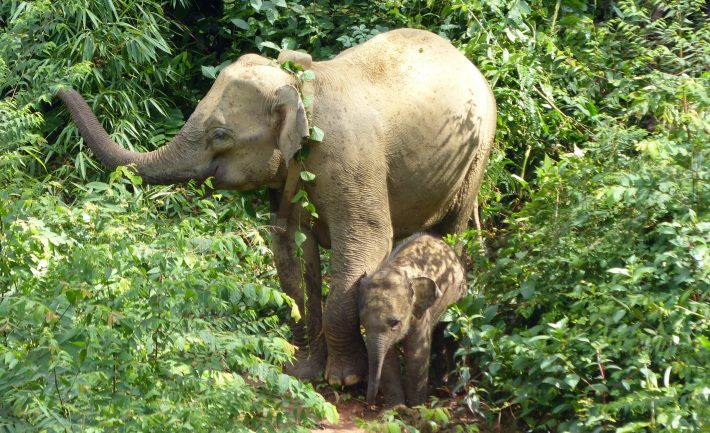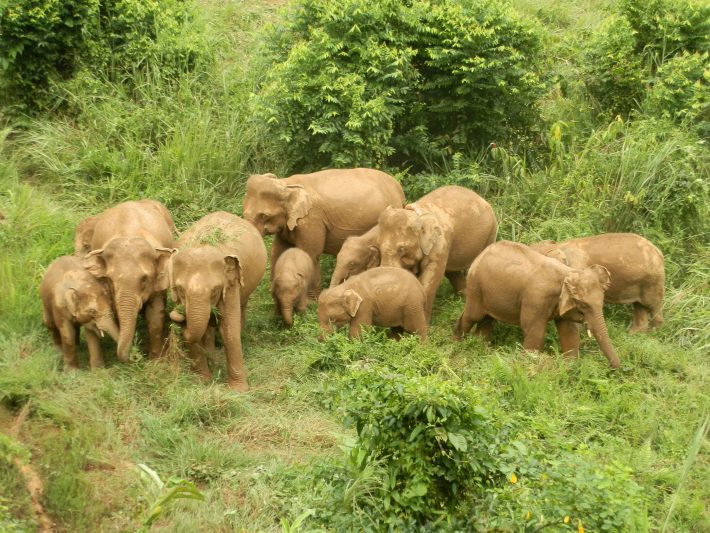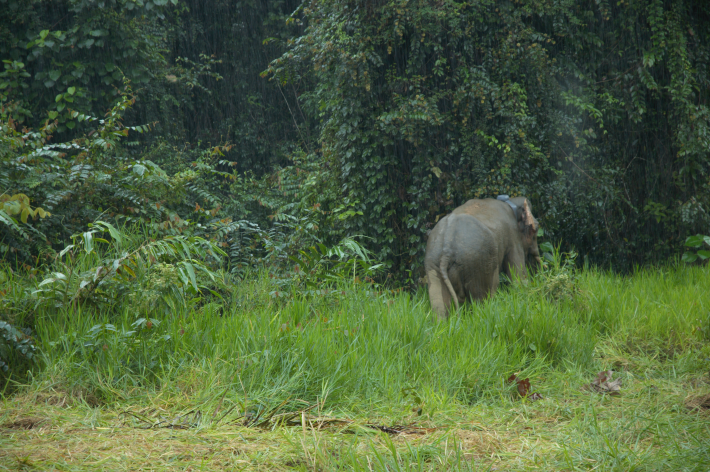Asian elephants prefer habitats on the boundaries of protected areas
New research, offering the most comprehensive analysis of Asian elephant movement and habitat preference to date, finds that elephants prefer habitats on the periphery of protected areas, rather than the areas themselves. The findings are published in the British Ecological Society’s Journal of Applied Ecology.

An international team of researchers have analysed the movement and habitat preferences of 102 Asian elephants in Peninsular Malaysia and Borneo, recording over 600,000 GPS locations. They found that the majority of elephants spent more than half of their time outside of protected areas, preferring slightly disturbed forests and areas of regrowth.
However, protected areas still played an important role, with the elephants’ biggest preference being for areas within three kilometres of protected area boundaries.
It’s thought that the preference for disturbed forest is related to food habits. Elephants like to eat grasses, bamboo, palms and fast-growing trees, which are common in disturbed environments, but relatively scarce under the canopy of old-growth forests.
Protected areas are important, but not enough as an overall strategy for Asian elephant conservation
Dr Ahimsa Campos-Arceiz from Xishuangbanna Tropical Botanical Garden and the University of Nottingham in Malaysia, and one of the lead authors of the study said: “Our results show that protected areas are very important, but not enough as an overall strategy for Asian elephant conservation.
“Given their preference for habitats outside the protected areas, elephants will inevitably come into conflict with people. This highlights the importance of promoting human-elephant coexistence around protected areas.”
The authors make clear that their findings do not diminish the importance of protected areas, a cornerstone of global conservation strategies. Dr Benoit Goossens from Danau Girang Field Centre and Cardiff University, the other lead author added: “We believe protected areas are the most effective tool for biodiversity conservation in general. In the case of Asian elephants, protected areas provide long-term safety and represent the core areas for elephant conservation.
“Our results show that elephant conservation strategies need to be realistic and acknowledge the nuances of elephant habitat needs and preferences, integrating holistic human-elephant coexistence approaches outside protected areas.”

Based on their findings, the authors make three key recommendations for Asian elephant conservation:
- Include large protected areas with core areas where elephants can find safety
- Incorporate ecological corridors to connect networks of protected areas
- Mitigate against human-elephant conflict, especially around protected areas, with emphasis on protecting people’s safety and livelihoods, as well as promoting tolerance towards elephant presence.
The Sundaic region, where the research took place, is a global hotspot for biodiversity. However, it is estimated that only 50% of the region’s original forest remains and less of 10% of it is formally protected. Asian elephants are endangered and live in highly fragmented landscapes in this region.
Because of the extensive home ranges of Asian elephants, they can often find themselves in human dominated landscapes, which inevitably leads to human-elephant conflict.
In the study, the researchers analysed the movement of 102 Asian elephants, recording over 60,000 GPS locations across the Malay peninsula and Borneo. The data was compiled from over a decade of fieldwork by three research groups.
The researchers then compared this data with the locations of formally protected areas to see how much time elephants spent in these areas and the areas around them.

Protected areas can range dramatically in the level of protection they receive. In this study the authors only included protected areas listed in the World Database of Protected Areas in their analysis. They did not include exploited forest reserves which are used for logging.
Speaking on the next steps for research in this area and Asian elephant conservation, Dr Antonio de la Torre, first author of the study, said: “Human-elephant conflict is now the main threat for Asian elephants, yet we know surprisingly little about the effectiveness of different mitigation strategies and how to promote long-term and sustainable human-elephant coexistence.
“Understanding how we can reduce the costs of this conflict for both people and elephants, and how to increase people’s tolerance towards elephant presence, should be the top research priority in the area.”
You can read the full article here:
de la Torre, J. A., Cheah, C., Lechner, A. M., Wong, E. P., Tuuga, A., Saaban, S., Goossens, B., & Campos-Arceiz, A. (2022). Sundaic elephants prefer habitats on the periphery of protected areas. Journal of Applied Ecology, 00, 1–12. https://doi.org/10.1111/1365-2664.14286
Like what we stand for?
Support our mission and help develop the next generation of ecologists by donating to the British Ecological Society.